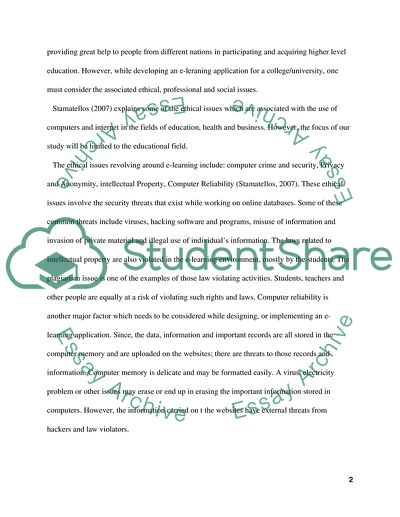Cite this document
(E-Learning Sites: Social, Professional and Ethical Issues Essay Example | Topics and Well Written Essays - 1500 words, n.d.)
E-Learning Sites: Social, Professional and Ethical Issues Essay Example | Topics and Well Written Essays - 1500 words. https://studentshare.org/education/1568757-e-learning-sites-social-professional-and-ethical-issues
E-Learning Sites: Social, Professional and Ethical Issues Essay Example | Topics and Well Written Essays - 1500 words. https://studentshare.org/education/1568757-e-learning-sites-social-professional-and-ethical-issues
(E-Learning Sites: Social, Professional and Ethical Issues Essay Example | Topics and Well Written Essays - 1500 Words)
E-Learning Sites: Social, Professional and Ethical Issues Essay Example | Topics and Well Written Essays - 1500 Words. https://studentshare.org/education/1568757-e-learning-sites-social-professional-and-ethical-issues.
E-Learning Sites: Social, Professional and Ethical Issues Essay Example | Topics and Well Written Essays - 1500 Words. https://studentshare.org/education/1568757-e-learning-sites-social-professional-and-ethical-issues.
“E-Learning Sites: Social, Professional and Ethical Issues Essay Example | Topics and Well Written Essays - 1500 Words”. https://studentshare.org/education/1568757-e-learning-sites-social-professional-and-ethical-issues.


